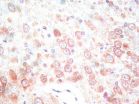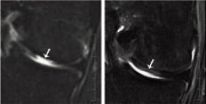(Press-News.org) "You may say I'm a dreamer, but I'm not the only one," sang John Lennon in his 1971 song Imagine.
And thanks to the dreams of a BYU student, we now know more about where and how imagination happens in our brains.
Stefania Ashby and her faculty mentor devised experiments using MRI technology that would help them distinguish pure imagination from related processes like remembering.
"I was thinking a lot about planning for my own future and imagining myself in the future, and I started wondering how memory and imagination work together," Ashby said. "I wondered if they were separate or if imagination is just taking past memories and combining them in different ways to form something I've never experienced before."
There's a bit of scientific debate over whether memory and imagination truly are distinct processes. So Ashby and her faculty mentor devised MRI experiments to put it to the test.
They asked study participants to provide 60 personal photographs for the "remember" section of the experiment. Participants also filled out a questionnaire beforehand to determine which scenarios would be unfamiliar to them and thus a better fit for the "imagine" section.
The researchers then showed people their own photographs during an MRI session to elicit brain activity that is strictly memory-based. A statistical analysis revealed distinctive patterns for memory and imagination.
"We were able to see the distinctions even in those small regions of the hippocampus," Ashby said. "It's really neat that we can see the difference between those two tasks in that small of a brain region."
Ashby co-authored the study with BYU psychology and neuroscience professor Brock Kirwan for the journal Cognitive Neuroscience. Kirwan studies memory at Brigham Young University, and Ashby is one of many students that he has mentored.
"Stefania came in really excited about this project, she pitched it to me, and basically sold it to me right there," Kirwan said. "It was really cool because it gave me a chance to become more immersed and really broaden my horizons."
INFORMATION:
Stefania graduated in 2011 and is currently working as a research associate at UC Davis, where she uses neuroimaging to study individuals at risk of psychotic disorders such as schizophrenia. Her plan is to earn a Ph.D. in neuroscience and continue researching.
Each year several hundred BYU graduates like Stefania fan out across the country to Ph.D. programs at other universities. Mentoring is a large reason why BYU ranks so highly as a Ph.D. launch pad. According to the National Science Foundation, BYU ranks 5th in the nation for the number of graduates who go on to earn doctorate degrees.
Neuroscientists watch imagination happening in the brain
2014-08-28
ELSE PRESS RELEASES FROM THIS DATE:
Protected areas proven to protect biodiversity
2014-08-28
Protected areas conserve biodiversity and more action is needed to ensure safeguards are in place to protect these areas, researchers say.
Published in PLOS ONE, researchers from Monash University, Stellenbosch University and the University of Exeter, used meta-analysis - combining results from different studies - to look at the past 30 years of research into these areas, to determine whether they actually protect biodiversity.
Dr Bernard Coetzee, School of Biological Sciences, said protecting an area from human exploitation made common sense, however, up until now ...
Serotonin transporter is a mifepristone pharmacological target
2014-08-28
In the central nervous system, serotonergic transmission is critically regulated by serotonin reuptake through the serotonin transporter. As a crucial pharmacological target of antidepressants, the role of erotonin transporter in treatment of major depression is well-established. Dr. Chaokun Li and co-workers from Xinxiang Medical University in China cloned the human brain serotonin transporter into Xenopus oocytes, to establish an in vitro expression system. Two-electrode voltage clamp recordings were used to detect serotonin transporter activity. Their results show that ...
Vasopressin decreases neuronal apoptosis during cardiopulmonary resuscitation
2014-08-28
Epinephrine has been shown to be a first-choice drug for cardiopulmonary resuscitation. Nevertheless, its β-adrenergic effect probably increases myocardial oxygen consumption and leads to severe cardiac and cerebral injuries; moreover, epinephrine does not elevate long-term survival rates. The American Heart Association and the European Resuscitation Council recently recommended that vasopressin can be used for cardiopulmonary resuscitation, instead of epinephrine. However, the guidelines do not discuss the effects of vasopressin during cerebral resuscitation. According ...
Sciatic nerve repair using adhesive bonding and a modified conduit
2014-08-28
When repairing nerves with adhesives, most researchers place glue directly on the nerve stumps, but this method does not fix the nerve ends well and allows glue to easily invade the nerve ends. Ordinarily, nerve conduits are cylindrical. However, it is difficult to insert the nerve ends into the conduit because the nerve is soft and there is frictional resistance. Xiangdang Liang and co-workers from the General Hospital of Chinese PLA designed a special conduit for the adhesive technique and defined the best parameters for its use through in vitro testing, and then repaired ...
New technique uses fraction of measurements to efficiently find quantum wave functions
2014-08-28
The result of every possible measurement on a quantum system is coded in its wave function, which until recently could be found only by taking many different measurements of a system and estimating a wave function that best fit all those measurements. Just two years ago, with the advent of a technique called direct measurement, scientists discovered they could reliably determine a system's wave function by "weakly" measuring one of its variables (e.g. position) and "strongly" measuring a complementary variable (momentum). Researchers at the University of Rochester have ...
Getting graffiti off a masterpiece (video)
2014-08-28
WASHINGTON, August 28, 2014 — Works of art can take years to create and just seconds to deface. It happened to Mark Rothko's "Black on Maroon" while on display at the Tate Modern gallery in London in 2012. A vandal tagged the painting, landing him two years in jail. Restoration experts teamed up with Dow Chemical to create a cleanser that would get rid of the graffiti and leave the art intact. Learn all about it in this episode of Speaking of Chemistry. The video is available at https://www.youtube.com/watch?v=eGR_AxXdSk0 .
INFORMATION:
Speaking of Chemistry is a production ...
Warm thanks: Gratitude can win you new friends
2014-08-28
Parents have long told their children to mind their Ps and Qs, and remember to say thank you. Now the evidence is in on why it matters.
A UNSW Australia-led study has shown for the first time that thanking a new acquaintance for their help makes them more likely to seek an ongoing social relationship with you.
"Saying thank you provides a valuable signal that you are someone with whom a high quality relationship could be formed," says UNSW psychologist Dr Lisa Williams, who conducted the research with Dr Monica Bartlett of Gonzaga University in the US.
The study, to ...
From nose to knee: Engineered cartilage regenerates joints
2014-08-28
Human articular cartilage defects can be treated with nasal septum cells. Researchers at the University and the University Hospital of Basel report that cells taken from the nasal septum are able to adapt to the environment of the knee joint and can thus repair articular cartilage defects. The nasal cartilage cells' ability to self-renew and adapt to the joint environment is associated with the expression of so-called HOX genes. The scientific journal Science Translational Medicine has published the research results together with the report of the first treated patients. ...
Drug shows promise for subset of stage III colon cancer patients
2014-08-28
Bethesda, MD (Aug. 28, 2014) — A subset of patients with stage III colon cancer had improved survival rates when treated with irinotecan-based therapy, according to a new study in Gastroenterology1, the official journal of the American Gastroenterological Association.
When added to the standard chemotherapy treatment — fluorouracil and leucovorin — adjuvant irinotecan therapy improved overall survival rates for patients with the CpG island methylator phenotype (CIMP). CIMP is seen in about 10 to 20 percent of colorectal cancers. Patients with CIMP-negative tumors, however, ...
Saddam Hussein -- a sincere dictator?
2014-08-28
Are political speeches manipulative and strategic? They could be – when politicians say one thing in public, and privately believe something else, political scientists say. Saddam Hussein's legacy of recording private discussions offers researchers a fascinating insight: both into the consistency of this controversial leader's public and private rhetoric and into the bigger picture of conflict and national security during his regime. New research into the similarity between political leaders' public statements and private beliefs, using Saddam Hussein's transcripts, appeared ...



